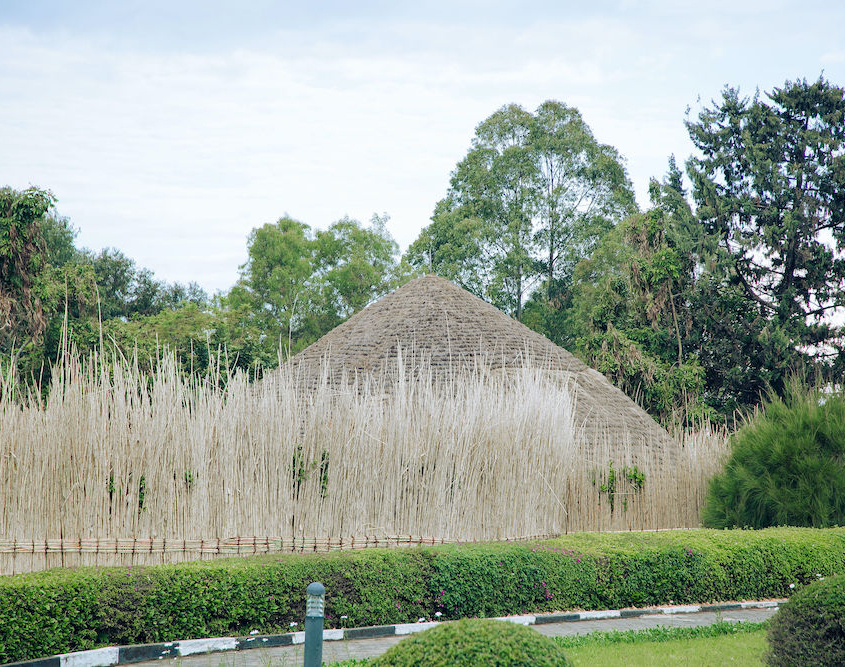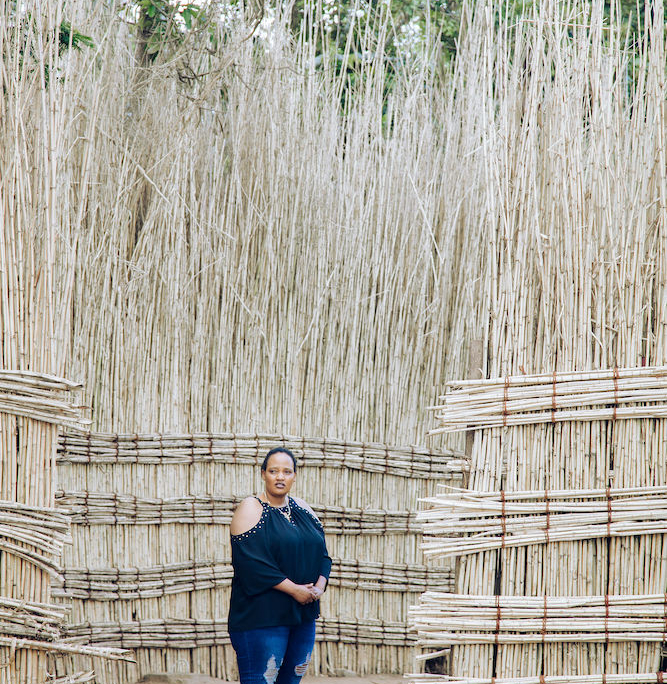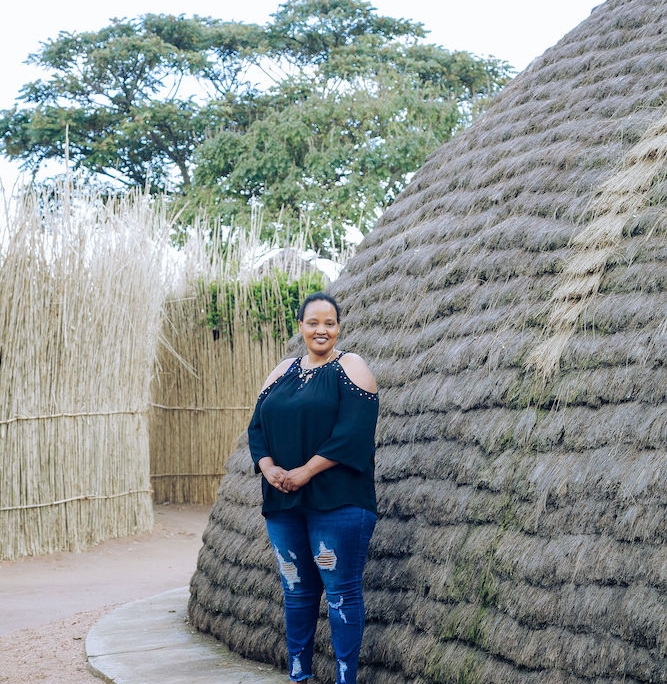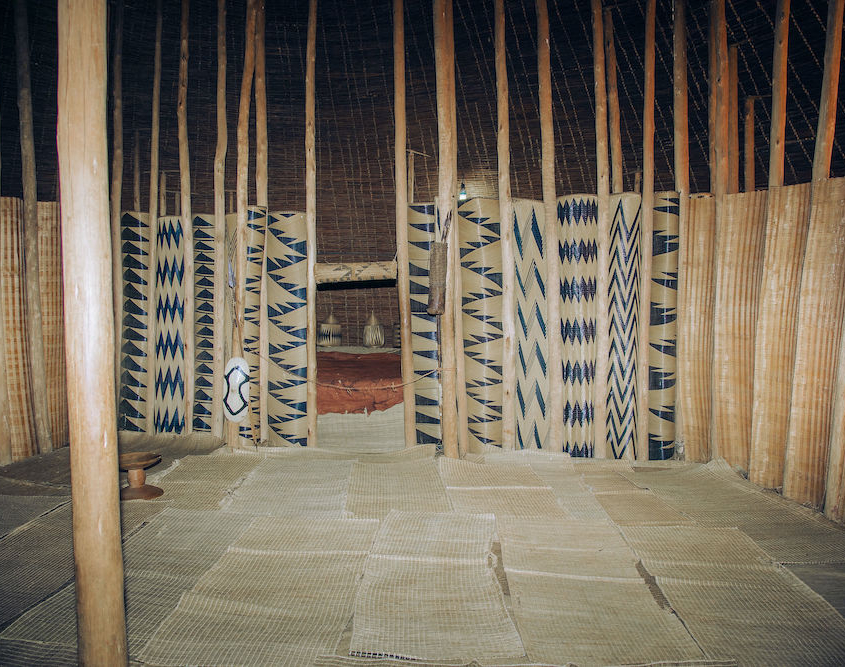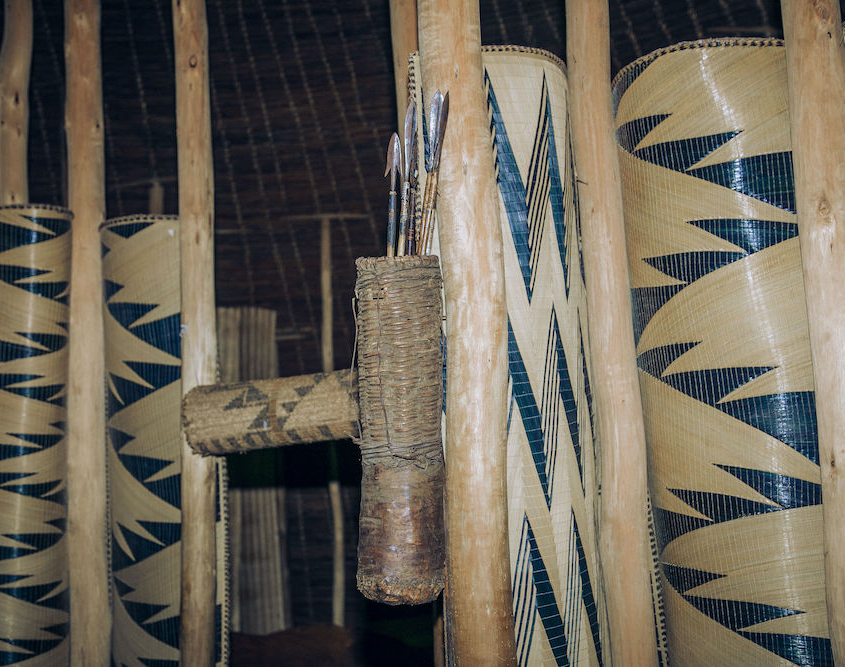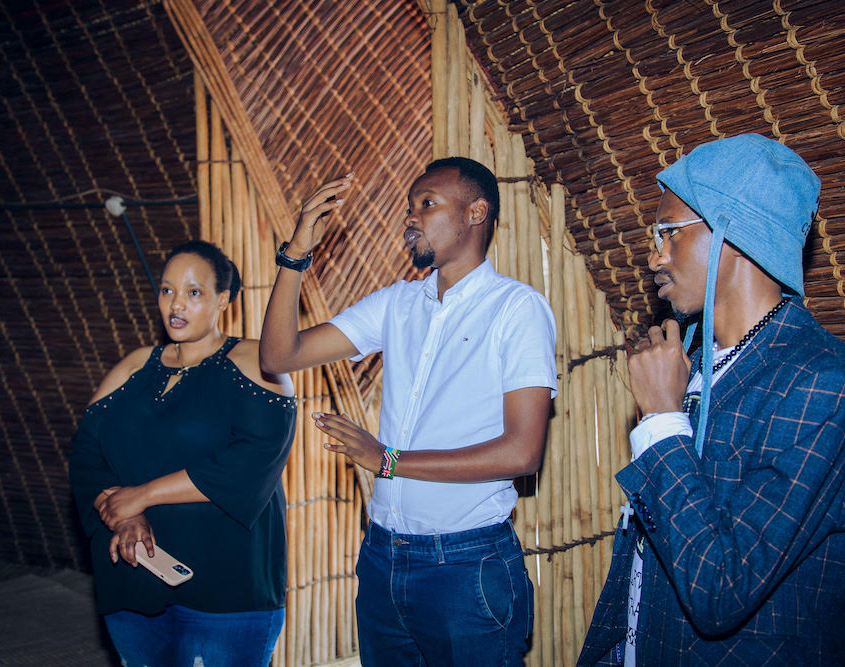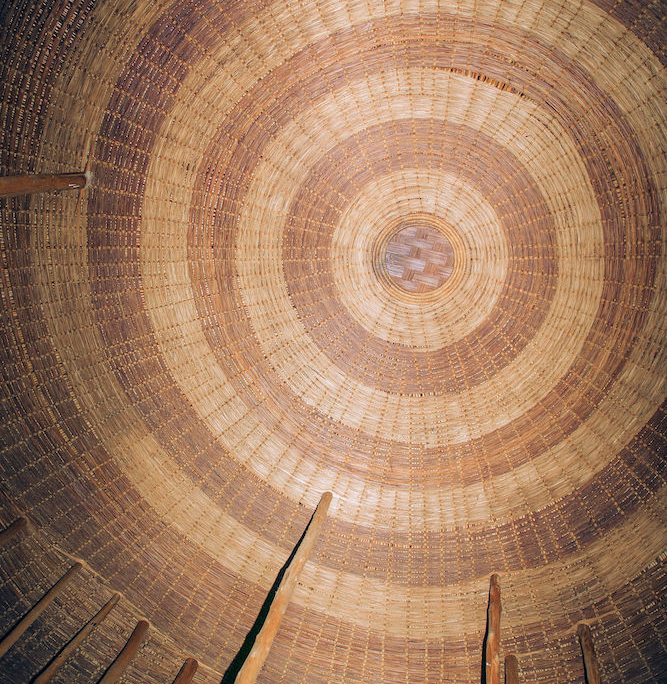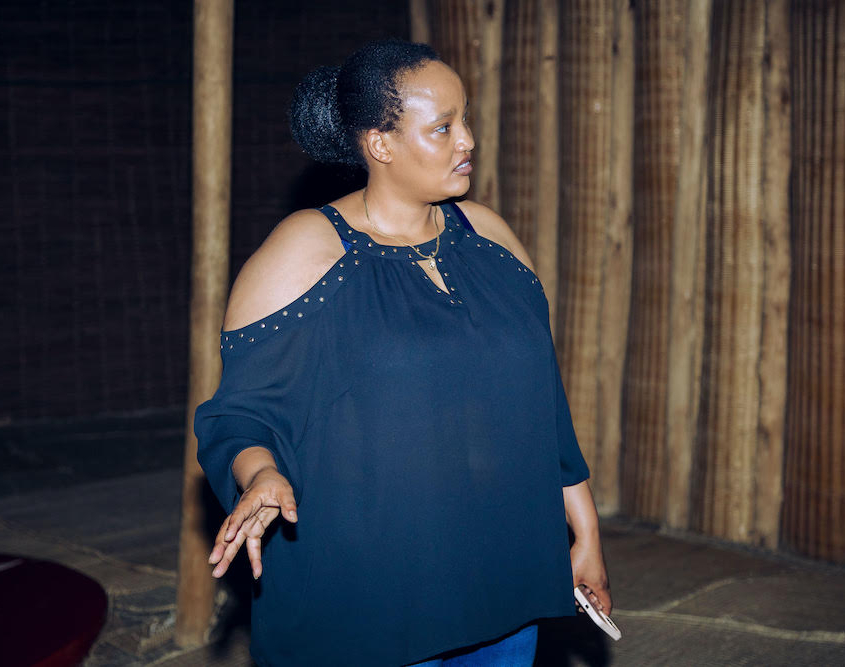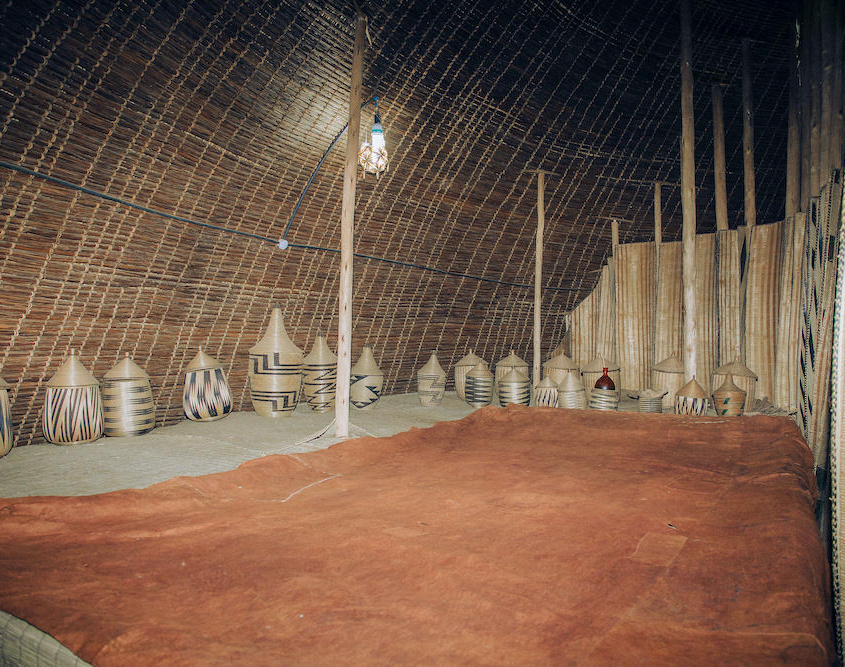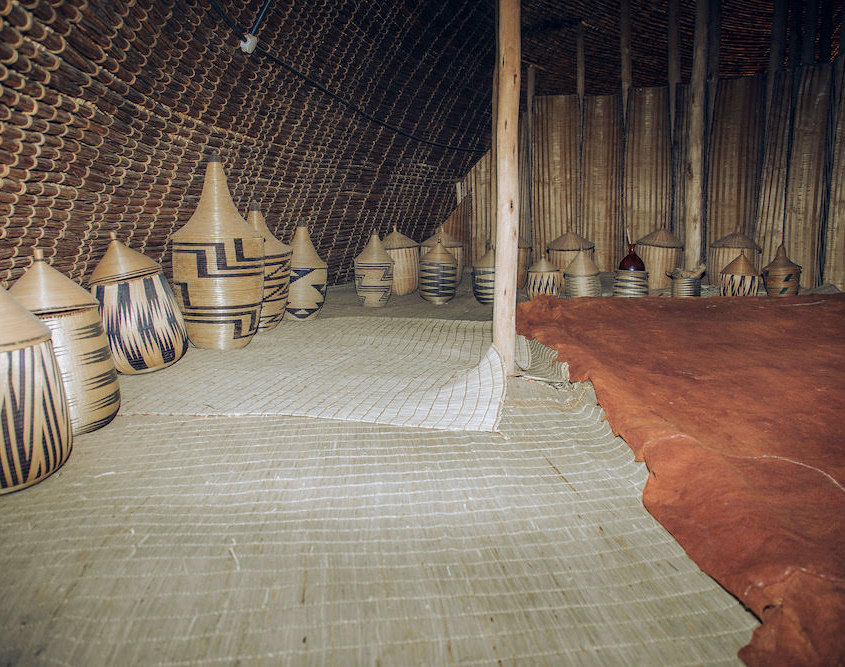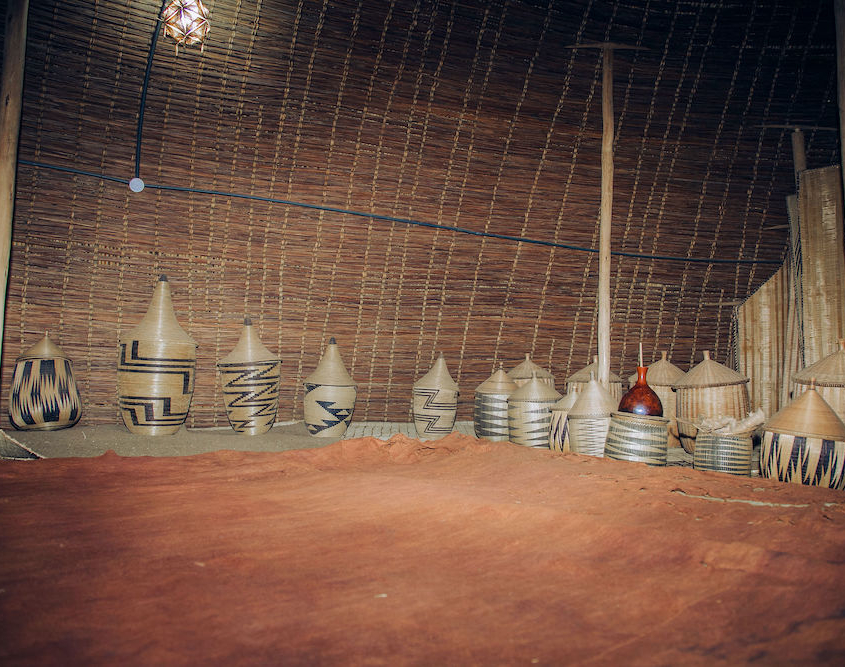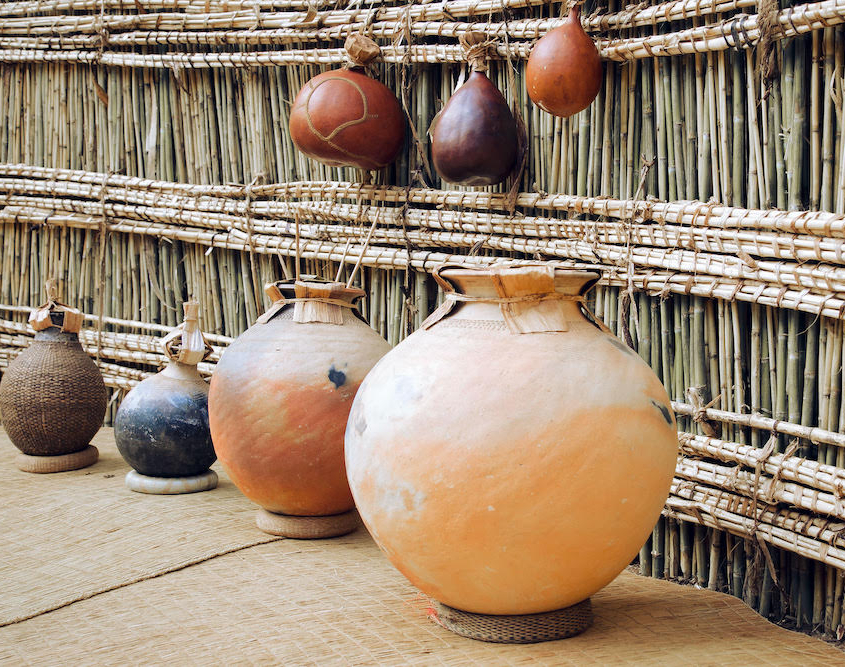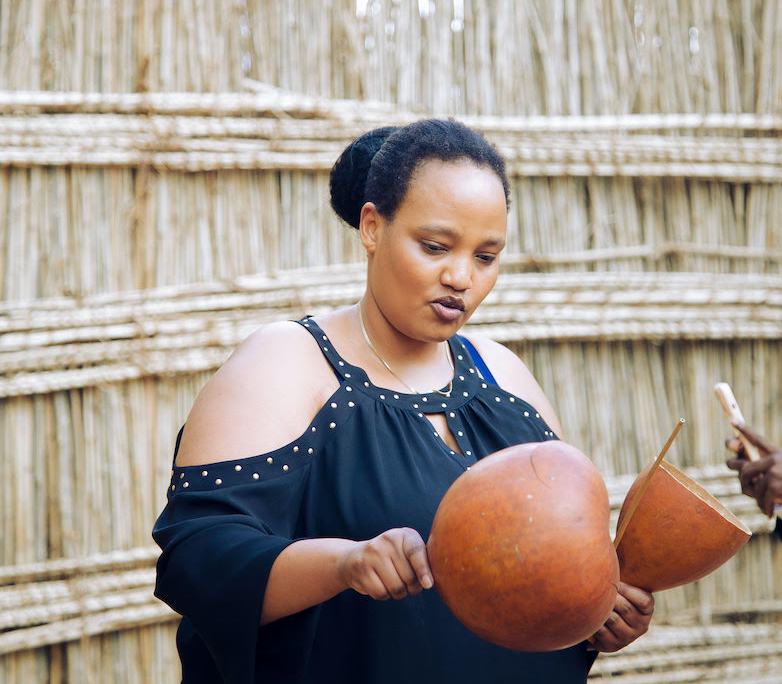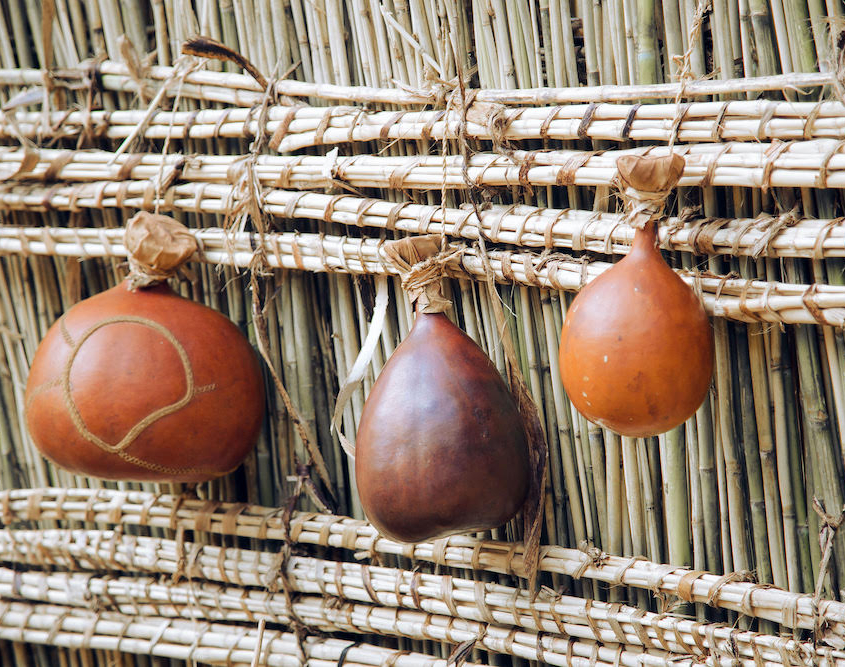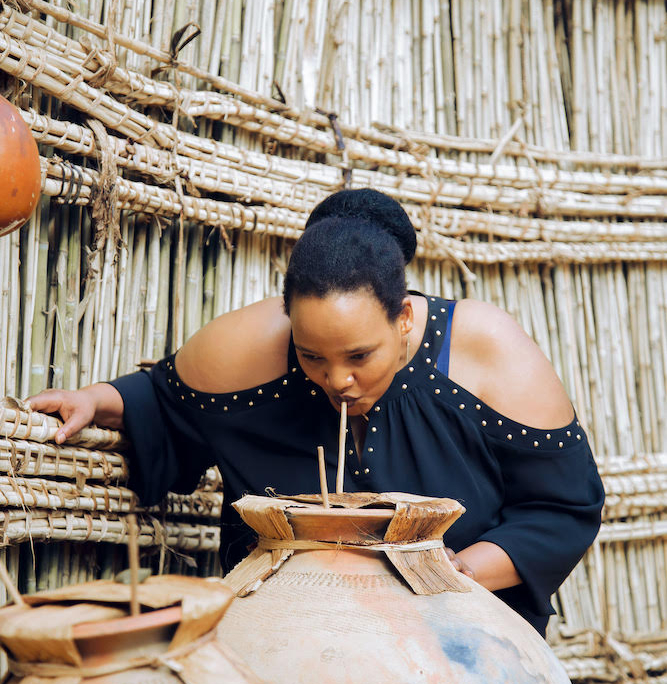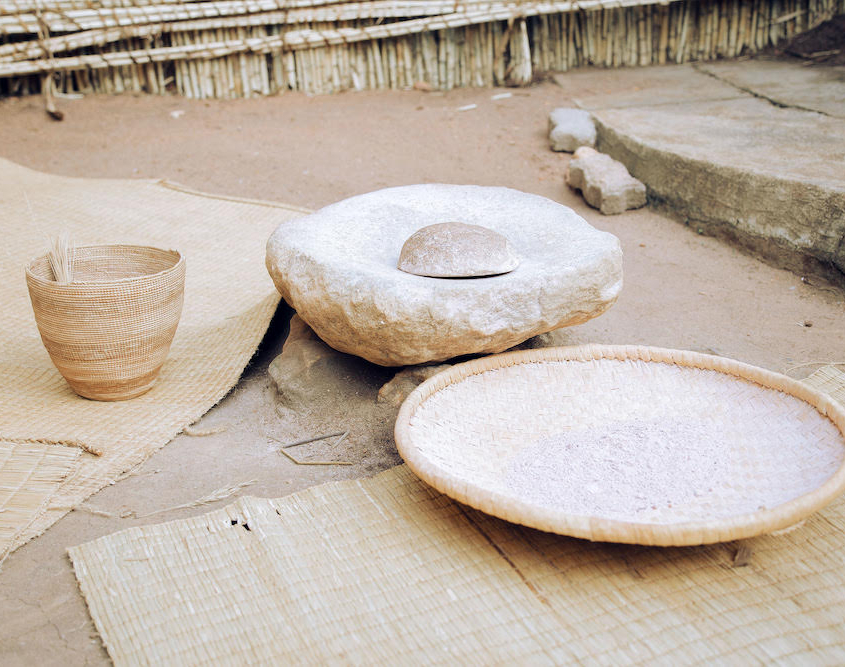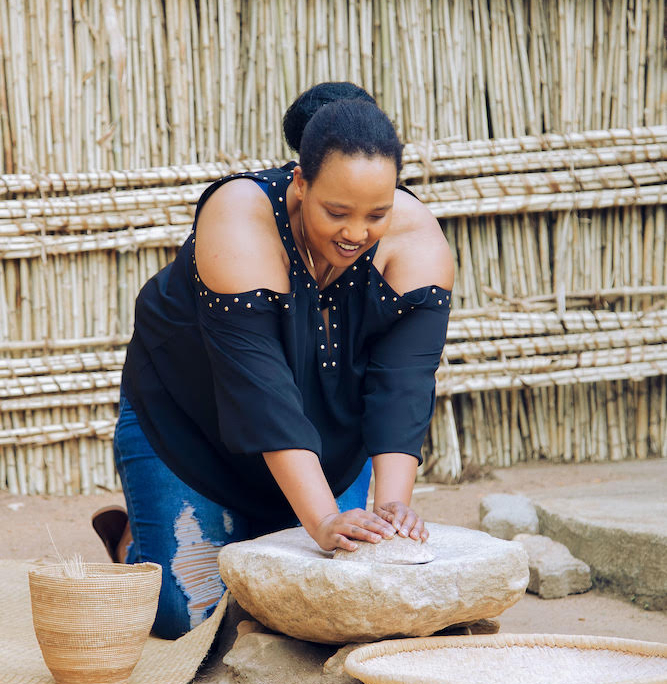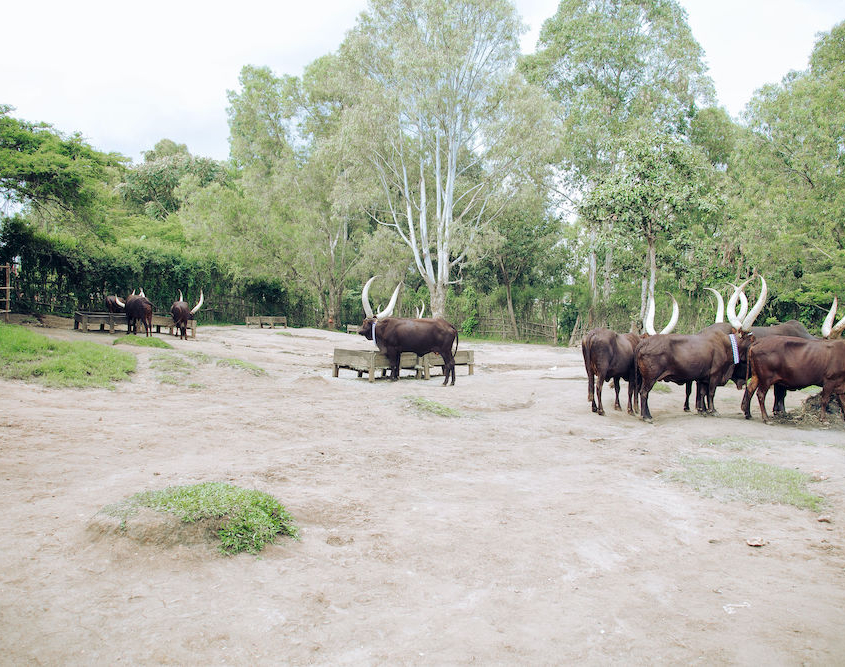Through the process of having my website built, expanding my marketing efforts, and engaging with customers/collectors at craft shows there were questions about the rich culture of my heritage that I had become more curious about.
The story of basket weaving, for me, had been a personal one —taught by my grandmother and mother—handed down over time. My story did not really connect to the context of the larger story of weaving in Rwanda. It was the traditional cultural practice to pass on one technique or style of weaving from one generation to another through sharing in women’s weaving circles, social gatherings, language, and storytelling.
I had a desire to understand beyond that context.
In May 2023 I returned to Rwanda. On this trip, I made it a point to seek out a better understanding of the culture and history of my heritage.
I visited the National Museum of Rwanda … Institute of National Museums of Rwanda: Urukari Nyanza
It was here that I learned a lot about the history, culture, and customs in Rwanda… pre- colonialism, and prior to the genocide. The museum is a day trip from Kigali.
There was a replica of the pre- 1959 traditional King’s compound houses with high ceilings, room dividers, and bed chambers. The compound was surrounded by high woven grass and reed walls.
There were two other houses in the compound: one for milk and the other for beer. Behind the compound was a corral of long hollow-horned Ankole-Watusi cattle… amazing! More on that below.
My guide was very knowledgeable and eager to share information. I learned about the structure of the house and how it reflects the culture of Rwanda. The house was amazingly cool during the heat of the day. The craftsmanship throughout the house and grounds were definitely something to see.
The royal compound is made up of several specialized houses. There is a royal beer brewer’s house as well as a milk house inside the enclosed area.
The reconstruction of the king’s house (originally used between 1899 and 1933) was carefully carried out with traditional materials using traditional techniques and skills. The thatched dwelling is shaped like a beehive and protected by a bamboo and reed fence. The building principles were never written down but rather passes on from one generation to another. The single-entrance traditional houses were made inside and outside with natural fibers such as bamboo, reed, and grass.
A traditional grass house (nyakatsi) was built in a way to be cool in hot times and warm when the outside temperatures fell.
The woven circular ceiling at the dome’s center is an important architectural element. It is supported by cypress poles and is a special style of weaving done by men only using different techniques. The resulting ceiling provides waterproofing and thermal insulation.
The small fireplace seen in one of the slides is used for warmth and to drive away insects.
At the entrance of the royal house, there was a wall of undecorated woven panels to filter the outdoor light and create a softly lit interior, as well as to protect the intimacy of the king from outside glances. The weaving technique allowed for someone inside to see out, however, blocked the curious outsider’s eye from peering in.
Basketry is a traditional art form in Rwanda that connects its past to its present.
Weaving with grasses was not confined to the weaving of baskets. It played an important role in making the structural elements of architecture and producing many of the tools used in daily life.
Harvested crops were traditionally stored in large baskets.
Weaving was gender-specific. Men’s basketry included all larger-sized architectural elements like roofs and ceilings and granaries, giant containers, and fencing.
Women created more delicate baskets, trays, vases, bowls, wall panels, floor mats, and screens– many with decorative components.
Reviewing the slides above from the King’s House offers great examples of all of this basketry.
Today grass weaving by men is in decline. Since 2009 grass-thatched domical houses may no longer be built. Many of the objects that men produced are no longer being used.
In daily life and in agriculture, the traditional woven containers produced by women are still being used.
Cattle-raising was one of the main sources of income for many Rwandans. A herder’s equipment included a jar with a long neck for fermented milk, buttermilk, and butter. Milk was stored in smaller wooden jars covered by a grass-woven lid.
Other styles of containers were used for beer and serving.
All milling of grains was done by hand.
One of the most fun parts of the tour was meeting the royal cows.
Originally bred in the 17th century to have long elegant horns, there is a small herd of cattle descending from the king’s herd. They are kept with great care. Their keepers sing to them at times to soothe them.
Rwanda has a mild and cool climate, which allows for good pasture and care conditions for animals. Cattle served as a symbol of power and were a mainstay in the economy. These animals were also a source of valuable food. The availability of yogurt, milk, and other dairy products made a large difference in diet, nutrition, and quality of life.
I so appreciated my time spent at the museum. I could really sense and feel the experience of life for the royal family in the King’s compound.




